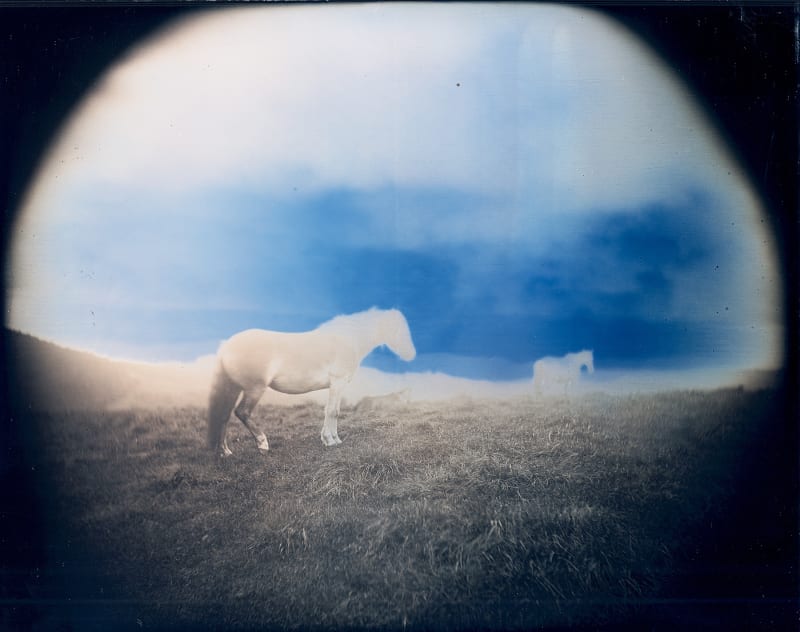Surrounded by sacred mountains in the afterglow, every dusk in Tono is forlorn. It is a feeling that has nothing to do with the loneliness of the city or the solitude of being thrown out into the nightless city. At the time of day, when silky and dense darkness seeps out from the shadows between the trees and the streets soaked in the evening twilight, I remember that we were once not alone but superimposed on a myriad of beings, in a formless and somewhat distant matrix. It is probably the ontological solitude of the indistinct continuity of all beings. Here, the space between clothes, skin, and the world around us is blurry, constantly allowing darkness to permeate our consciousness.
It has been twelve years since I encountered Tono, the remote but peculiarly vibrant place in the heart of Northern Japan.
It was dusk on the first frosty day in October 2010, six months before the Great East Japan Earthquake. My first memory was the fragrant smell of mowed grass burning everywhere in the harvested rice paddies. I remember thinking, playfully, that there was an invisible gate to the "another world" around the seven or eight shadowy plane trees along the road through the Tono basin.
That night, I unpacked at a minshuku (family-owned guest house) in front of the Tono station, visited nearby izakaya, and went to bed deeply drunk with regional sake. At midnight, I awoke with a strange sensation and found a cat sitting by my futon. The cat was staring into my half-open mouth closely with her round eyes as if something captivated her completely. In the corner of the seasoned six-tatami mat room, the TV, which should have been turned off, was glowing brightly, and a rippling noise was leaking from the screen.
The next morning, I went downstairs with a heavy head and found three men sitting at the breakfast table, their faces together, talking intently. "Perhaps their pillows were facing the wrong direction." "No, the room was wrong in the first place, so we should tell the owner to change it." What were they discussing? Their voices, which were those of thirty-something workers, were earnest. When they left, the owner's wife told me they are frequented by travelers searching for zashikiwarashi, spirits in the form of children who are believed to bring fortune if spotted, as she placed the second helping of miso soup on the tray.
Tono is the home of Japan's ethnology with Tono Monogatari (Legends of Tono), a series of the most peculiar fairytales and sometimes true stories collected by Kizen Sasaki and rendered by Kunio Yanagita. Tono, or the entire Tōhoku region, once called Ezo by the Yamato race, embraces multilayered antiquities and spiritualities as the consequence of the history being colonized over centuries. There is always something invisible, wriggling in between those layers.
We are in the 21st century, the age of re-enchantment with advanced communication technology and scientific narratives, and these invisible beings, the collective memories and spirituality buried deep in the substratum of our cultures, still linger around us. Can we, who live with fear in the age of uncertainty and await the arrival of non-human consciousness, laugh at the men who have come searching for zashikiwarashi?
Following the echoes of the forest, I take up a mirror to something invisible, forgotten yet whispering to us.
TAKASHI ARAI (born 1978,. Kawasaki, Japan) is an artist who exercises the daguerreotype, video, sound, text, and research on the relationship between individual and collective memories. Arai views daguerreotypes, one of the earliest photographic techniques, as "micro-monuments" that convey the sensation of encountering subjects in a way that transcends time and space and stretches its contemporary significance primarily on the subject of nuclear histories.
Arai is a member of the Association of East Asian Environment History, research at the Tono Culture Research Center, and New Socio-Environmental Theories for the Post-Pandemic World at the Institute for Research in Humanity, Kyoto University.
Arai won the 41st Ihei Kimura Photography Award in 2016 and the Category Grand-Prix at the 72nd Salerno International Film Festival in 2018 for the short film "The Mirror of the Oshira Deity." Arai's works are held in the Smithsonian Institution, Musée Guimet, Museum of Fine Arts Boston, San Francisco Museum of Modern Art, National Museum of Modern Art Tokyo, and other public collections. M onographs include "Hyaku no Kagami / Hyaku no Taiyo (100 Suns / 100 Mirrors: At the Shore of Memories and Photographs)" Iwanami, 2023, and "MONUMENTS" PGI, 2015,

